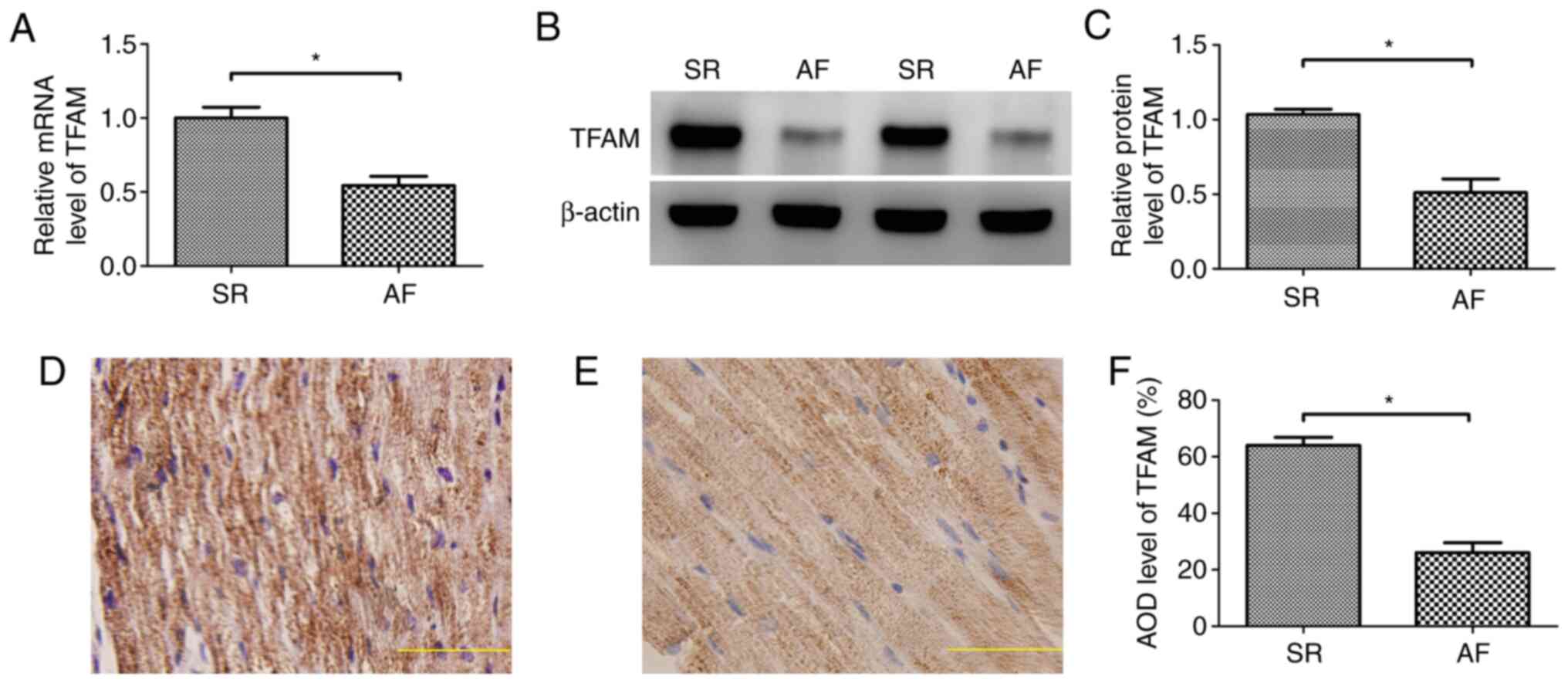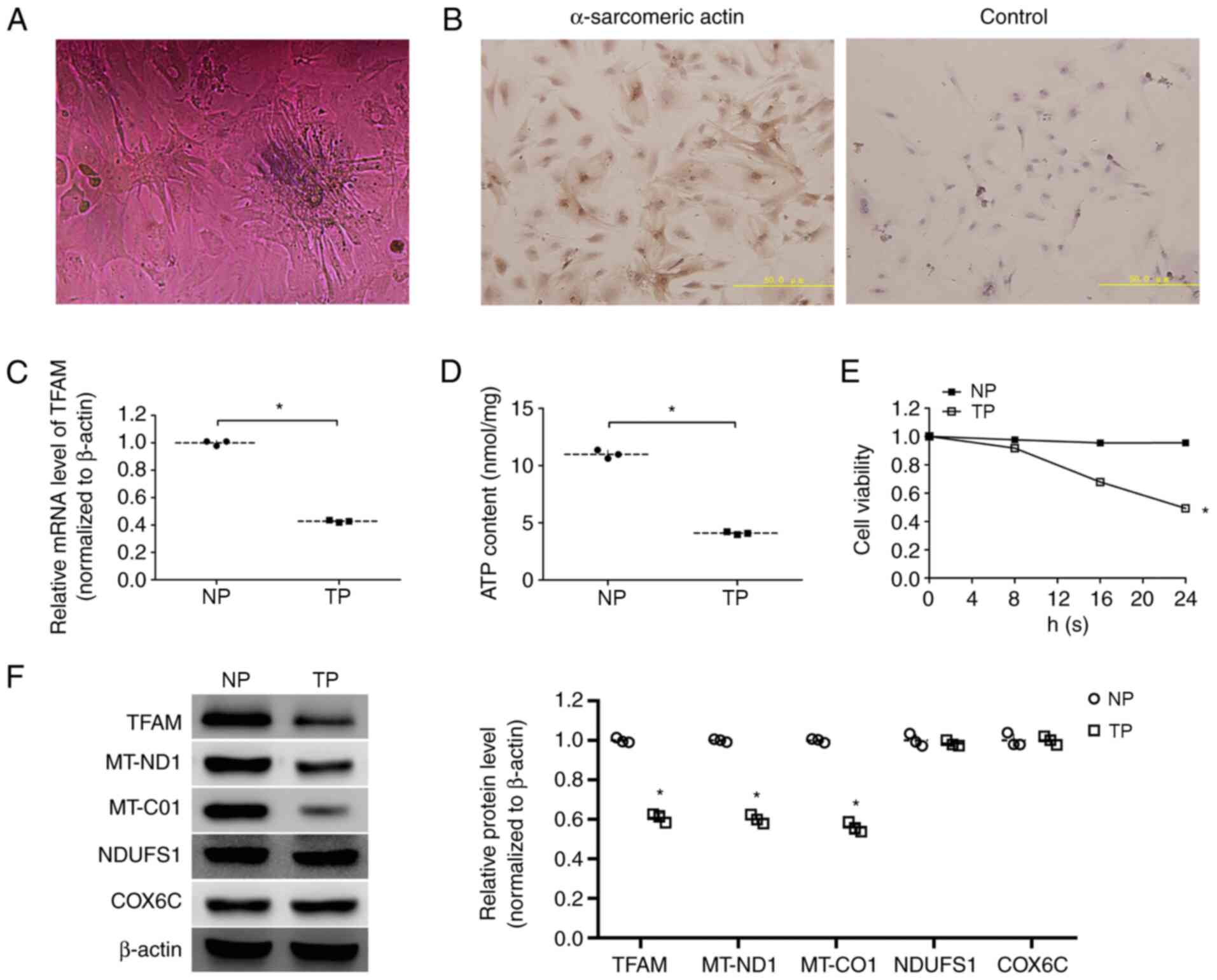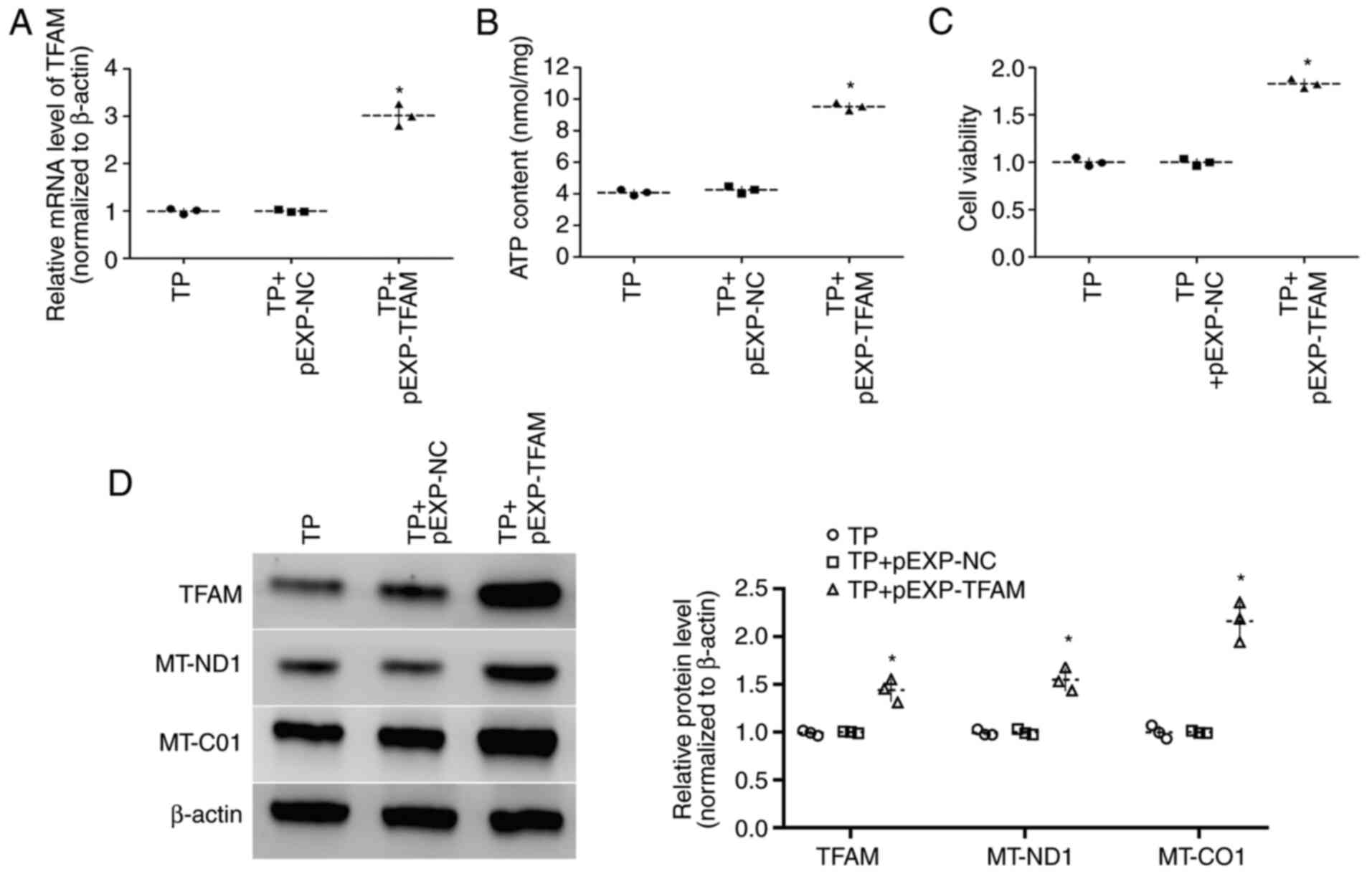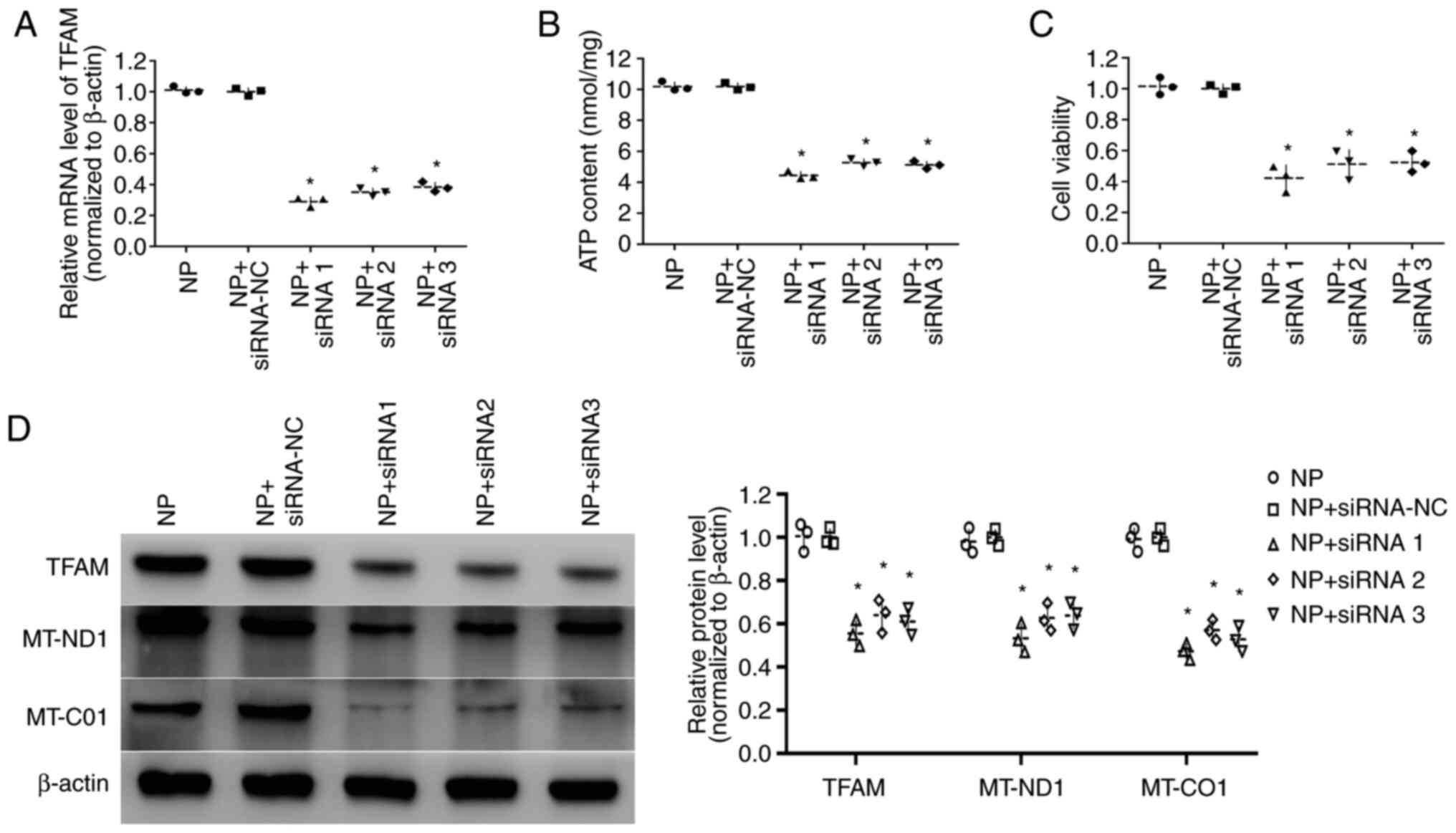|
1
|
Rahman F, Kwan GF and Benjamin EJ: Global
epidemiology of atrial fibrillation. Nat Rev Cardiol. 11:639–654.
2014. View Article : Google Scholar : PubMed/NCBI
|
|
2
|
Friberg L and Bergfeldt L: Atrial
fibrillation prevalence revisited. J Intern Med. 274:461–468. 2013.
View Article : Google Scholar : PubMed/NCBI
|
|
3
|
Piccini JP, Hammill BG, Sinner MF, Jensen
PN, Hernandez AF, Heckbert SR, Benjamin EJ and Curtis LH: Incidence
and prevalence of atrial fibrillation and associated mortality
among medicare beneficiaries, 1993–2007. Circ Cardiovasc Qual
Outcomes. 5:85–93. 2012. View Article : Google Scholar : PubMed/NCBI
|
|
4
|
Staerk L, Wang B, Preis SR, Larson MG,
Lubitz SA, Ellinor PT, McManus DD, Ko D, Weng LC, Lunetta KL, et
al: Lifetime risk of atrial fibrillation according to optimal,
borderline, or elevated levels of risk factors: Cohort study based
on longitudinal data from the Framingham heart study. BMJ.
361:k14532018. View Article : Google Scholar : PubMed/NCBI
|
|
5
|
Chugh SS, Havmoeller R, Narayanan K, Singh
D, Rienstra M, Benjamin EJ, Gillum RF, Kim YH, McAnulty JH Jr,
Zheng ZJ, et al: Worldwide epidemiology of atrial fibrillation: A
global burden of disease 2010 study. Circulation. 129:837–847.
2014. View Article : Google Scholar : PubMed/NCBI
|
|
6
|
Stewart S, Hart CL, Hole DJ and McMurray
JJ: A population-based study of the long-term risks associated with
atrial fibrillation: 20-year follow-up of the Renfrew/Paisley
study. Am J Med. 113:359–364. 2002. View Article : Google Scholar : PubMed/NCBI
|
|
7
|
Freedman B, Potpara TS and Lip GYH: Stroke
prevention in atrial fibrillation. Lancet. 388:806–817. 2016.
View Article : Google Scholar : PubMed/NCBI
|
|
8
|
Thrall G, Lane D, Carroll D and Lip GY:
Quality of life in patients with atrial fibrillation: A systematic
review. Am J Med. 119:448.e1–e19. 2006. View Article : Google Scholar
|
|
9
|
Benjamin EJ, Wolf PA, D'Agostino RB,
Silbershatz H, Kannel WB and Levy D: Impact of atrial fibrillation
on the risk of death: The Framingham heart study. Circulation.
98:946–952. 1998. View Article : Google Scholar : PubMed/NCBI
|
|
10
|
Friberg L, Hammar N, Pettersson H and
Rosenqvist M: Increased mortality in paroxysmal atrial
fibrillation: Report from the Stockholm Cohort-study of atrial
fibrillation (SCAF). Eur Heart J. 28:2346–2353. 2007. View Article : Google Scholar : PubMed/NCBI
|
|
11
|
Tsuboi M, Hisatome I, Morisaki T, Tanaka
M, Tomikura Y, Takeda S, Shimoyama M, Ohtahara A, Ogino K, Igawa O,
et al: Mitochondrial DNA deletion associated with the reduction of
adenine nucleotides in human atrium and atrial fibrillation. Eur J
Clin Invest. 31:489–496. 2001. View Article : Google Scholar : PubMed/NCBI
|
|
12
|
Barbey O, Pierre S, Duran MJ, Sennoune S,
Lévy S and Maixent JM: Specific up-regulation of mitochondrial
F0F1-ATPase activity after short episodes of atrial fibrillation in
sheep. J Cardiovasc Electrophysiol. 11:432–438. 2000. View Article : Google Scholar : PubMed/NCBI
|
|
13
|
Cha YM, Dzeja PP, Shen WK, Jahangir A,
Hart CYT, Terzic A and Redfield MM: Failing atrial myocardium:
Energetic deficits accompany structural remodeling and electrical
instability. Am J Physiol Heart Circ Physiol. 284:H1313–H1320.
2003. View Article : Google Scholar : PubMed/NCBI
|
|
14
|
Emelyanova L, Ashary Z, Cosic M,
Negmadjanov U, Ross G, Rizvi F, Olet S, Kress D, Sra J, Tajik AJ,
et al: Selective downregulation of mitochondrial electron transport
chain activity and increased oxidative stress in human atrial
fibrillation. Am J Physiol Heart Circ Physiol. 311:H54–H63. 2016.
View Article : Google Scholar : PubMed/NCBI
|
|
15
|
Ausma J, Coumans WA, Duimel H, Van der
Vusse GJ, Allessie MA and Borgers M: Atrial high energy phosphate
content and mitochondrial enzyme activity during chronic atrial
fibrillation. Cardiovasc Res. 47:788–796. 2000. View Article : Google Scholar : PubMed/NCBI
|
|
16
|
Ou F, Rao N, Jiang X, Qian M, Feng W, Yin
L and Chen X: Analysis on differential gene expression data for
prediction of new biological features in permanent atrial
fibrillation. PLoS One. 8:e761662013. View Article : Google Scholar : PubMed/NCBI
|
|
17
|
Yeh YH, Kuo CT, Lee YS, Lin YM, Nattel S,
Tsai FC and Chen WJ: Region-specific gene expression profiles in
the left atria of patients with valvular atrial fibrillation. Heart
Rhythm. 10:383–391. 2013. View Article : Google Scholar : PubMed/NCBI
|
|
18
|
Kang D, Kim SH and Hamasaki N:
Mitochondrial transcription factor A (TFAM): Roles in maintenance
of mtDNA and cellular functions. Mitochondrion. 7:39–44. 2007.
View Article : Google Scholar : PubMed/NCBI
|
|
19
|
Kunkel GH, Kunkel CJ, Ozuna H, Miralda I
and Tyagi SC: TFAM overexpression reduces pathological cardiac
remodeling. Mol Cell Biochem. 454:139–152. 2019. View Article : Google Scholar : PubMed/NCBI
|
|
20
|
Lebrecht D, Setzer B, Ketelsen UP,
Haberstroh J and Walker UA: Time-dependent and tissue-specific
accumulation of mtDNA and respiratory chain defects in chronic
doxorubicin cardiomyopathy. Circulation. 108:2423–2429. 2003.
View Article : Google Scholar : PubMed/NCBI
|
|
21
|
Ide T, Tsutsui H, Hayashidani S, Kang D,
Suematsu N, Nakamura K, Utsumi H, Hamasaki N and Takeshita A:
Mitochondrial DNA damage and dysfunction associated with oxidative
stress in failing hearts after myocardial infarction. Circ Res.
88:529–535. 2001. View Article : Google Scholar : PubMed/NCBI
|
|
22
|
World Medical Association: World medical
association declaration of Helsinki: Ethical principles for medical
research involving human subjects. JAMA. 310:2191–2194. 2013.
View Article : Google Scholar : PubMed/NCBI
|
|
23
|
Wiersma M, Meijering RAM, Qi XY, Zhang D,
Liu T, Hoogstra-Berends F, Sibon OCM, Henning RH, Nattel S and
Brundel BJJ: Endoplasmic reticulum stress is associated with
autophagy and cardiomyocyte remodeling in experimental and human
atrial fibrillation. J Am Heart Assoc. 6:e0064582017. View Article : Google Scholar : PubMed/NCBI
|
|
24
|
Brundel BJ, Kampinga HH and Henning RH:
Calpain inhibition prevents pacing-induced cellular remodeling in a
HL-1 myocyte model for atrial fibrillation. Cardiovasc Res.
62:521–528. 2004. View Article : Google Scholar : PubMed/NCBI
|
|
25
|
Lu L, Han H, Tian Y, Li W, Zhang J, Feng M
and Li Y: Aurora kinase A mediates c-Myc's oncogenic effects in
hepatocellular carcinoma. Mol Carcinog. 54:1467–1479. 2015.
View Article : Google Scholar : PubMed/NCBI
|
|
26
|
Chen Y, Zhang Z, Yang K, Du J, Xu Y and
Liu S: Myeloid zinc-finger 1 (MZF-1) suppresses prostate tumor
growth through enforcing ferroportin-conducted iron egress.
Oncogene. 34:3839–3847. 2015. View Article : Google Scholar : PubMed/NCBI
|
|
27
|
Livak KJ and Schmittgen TD: Analysis of
relative gene expression data using real-time quantitative PCR and
the 2(-Delta Delta C(T)) method. Methods. 25:402–408. 2001.
View Article : Google Scholar : PubMed/NCBI
|
|
28
|
Zhang D, Wu CT, Qi X, Meijering RAM,
Hoogstra-Berends F, Tadevosyan A, Cubukcuoglu Deniz G, Durdu S,
Akar AR, Sibon OCM, et al: Activation of histone deacetylase-6
induces contractile dysfunction through derailment of α-tubulin
proteostasis in experimental and human atrial fibrillation.
Circulation. 129:346–358. 2014. View Article : Google Scholar : PubMed/NCBI
|
|
29
|
Chugh SS, Roth GA, Gillum RF and Mensah
GA: Global burden of atrial fibrillation in developed and
developing nations. Glob Heart. 9:113–119. 2014. View Article : Google Scholar : PubMed/NCBI
|
|
30
|
Zimetbaum P: Antiarrhythmic drug therapy
for atrial fibrillation. Circulation. 125:381–389. 2012. View Article : Google Scholar : PubMed/NCBI
|
|
31
|
Scherr D, Khairy P, Miyazaki S,
Aurillac-Lavignolle V, Pascale P, Wilton SB, Ramoul K, Komatsu Y,
Roten L, Jadidi A, et al: Five-year outcome of catheter ablation of
persistent atrial fibrillation using termination of atrial
fibrillation as a procedural endpoint. Circ Arrhythm
Electrophysiol. 8:18–24. 2015. View Article : Google Scholar : PubMed/NCBI
|
|
32
|
Gillinov AM, Gelijns AC, Parides MK,
DeRose JJ Jr, Moskowitz AJ, Voisine P, Ailawadi G, Bouchard D,
Smith PK, Mack MJ, et al: Surgical ablation of atrial fibrillation
during mitral-valve surgery. N Engl J Med. 372:1399–1409. 2015.
View Article : Google Scholar : PubMed/NCBI
|
|
33
|
Tu T, Zhou S, Liu Z, Li X and Liu Q:
Quantitative proteomics of changes in energy metabolism-related
proteins in atrial tissue from valvular disease patients with
permanent atrial fibrillation. Circ J. 78:993–1001. 2014.
View Article : Google Scholar : PubMed/NCBI
|
|
34
|
Mayr M, Yusuf S, Weir G, Chung YL, Mayr U,
Yin X, Ladroue C, Madhu B, Roberts N, Souza AD, et al: Combined
metabolomic and proteomic analysis of human atrial fibrillation. J
Am Coll Cardiol. 51:585–594. 2008. View Article : Google Scholar : PubMed/NCBI
|
|
35
|
Kunkel GH, Chaturvedi P and Tyagi SC:
Mitochondrial pathways to cardiac recovery: TFAM. Heart Fail Rev.
21:499–517. 2016. View Article : Google Scholar : PubMed/NCBI
|
|
36
|
Picca A and Lezza AM: Regulation of
mitochondrial biogenesis through TFAM-mitochondrial DNA
interactions: Useful insights from aging and calorie restriction
studies. Mitochondrion. 25:67–75. 2015. View Article : Google Scholar : PubMed/NCBI
|
|
37
|
Alam TI, Kanki T, Muta T, Ukaji K, Abe Y,
Nakayama H, Takio K, Hamasaki N and Kang D: Human mitochondrial DNA
is packaged with TFAM. Nucleic Acids Res. 31:1640–1645. 2003.
View Article : Google Scholar : PubMed/NCBI
|
|
38
|
Ekstrand MI, Falkenberg M, Rantanen A,
Park CB, Gaspari M, Hultenby K, Rustin P, Gustafsson CM and Larsson
NG: Mitochondrial transcription factor A regulates mtDNA copy
number in mammals. Hum Mol Genet. 13:935–944. 2004. View Article : Google Scholar : PubMed/NCBI
|
|
39
|
Wang J, Wilhelmsson H, Graff C, Li H,
Oldfors A, Rustin P, Brüning JC, Kahn CR, Clayton DA, Barsh GS, et
al: Dilated cardiomyopathy and atrioventricular conduction blocks
induced by heart-specific inactivation of mitochondrial DNA gene
expression. Nat Genet. 21:133–137. 1999. View Article : Google Scholar : PubMed/NCBI
|
|
40
|
Garnier A, Fortin D, Delomenie C, Momken
I, Veksler V and Ventura-Clapier R: Depressed mitochondrial
transcription factors and oxidative capacity in rat failing cardiac
and skeletal muscles. J Physiol. 551:491–501. 2003. View Article : Google Scholar : PubMed/NCBI
|
|
41
|
Judd J, Lovas J and Huang GN: Isolation,
culture and transduction of adult mouse cardiomyocytes. J Vis Exp.
28:540122016.
|
|
42
|
Zhou P and Pu WT: Recounting cardiac
cellular composition. Circ Res. 118:368–370. 2016. View Article : Google Scholar : PubMed/NCBI
|
|
43
|
Parameswaran S, Kumar S, Verma RS and
Sharma RK: Cardiomyocyte culture-an update on the in vitro
cardiovascular model and future challenges. Can J Physiol
Pharmacol. 91:985–998. 2013. View Article : Google Scholar : PubMed/NCBI
|
|
44
|
Belostotskaya GB and Golovanova TA:
Characterization of contracting cardiomyocyte colonies in the
primary culture of neonatal rat myocardial cells: A model of in
vitro cardiomyogenesis. Cell Cycle. 13:910–918. 2014. View Article : Google Scholar : PubMed/NCBI
|
|
45
|
Stanley WC, Recchia FA and Lopaschuk GD:
Myocardial substrate metabolism in the normal and failing heart.
Physiol Rev. 85:1093–1129. 2005. View Article : Google Scholar : PubMed/NCBI
|
|
46
|
Schild L, Bukowska A, Gardemann A, Polczyk
P, Keilhoff G, Täger M, Dudley SC, Klein HU, Goette A and Lendeckel
U: Rapid pacing of embryoid bodies impairs mitochondrial ATP
synthesis by a calcium-dependent mechanism-a model of in vitro
differentiated cardiomyocytes to study molecular effects of
tachycardia. Biochim Biophys Acta. 1762:608–615. 2006. View Article : Google Scholar : PubMed/NCBI
|
|
47
|
Harris DA and Das AM: Control of
mitochondrial ATP synthesis in the heart. Biochem J. 280:561–573.
1991. View Article : Google Scholar : PubMed/NCBI
|


















